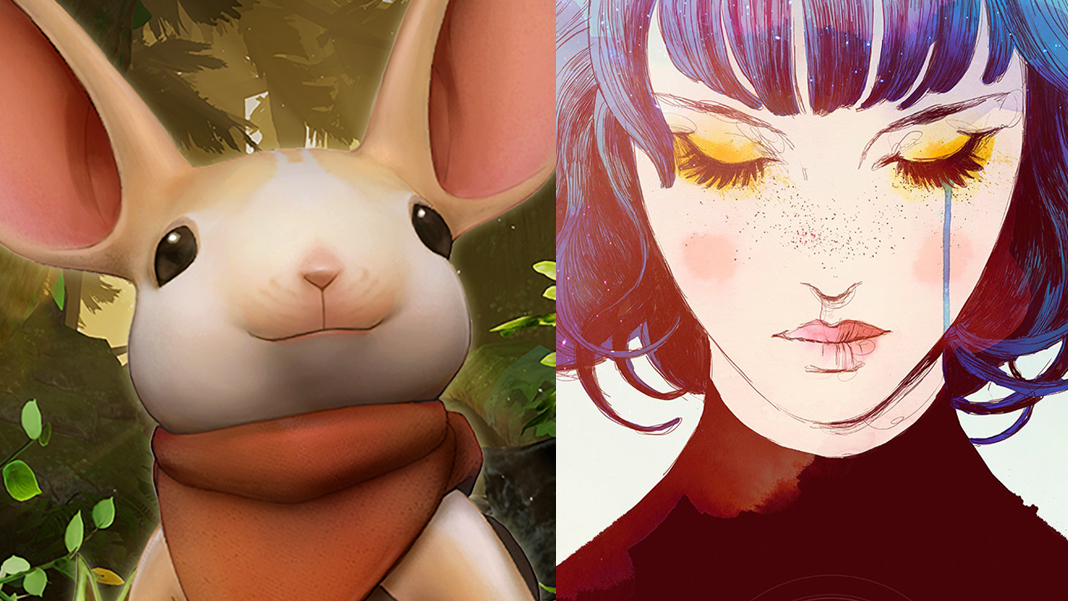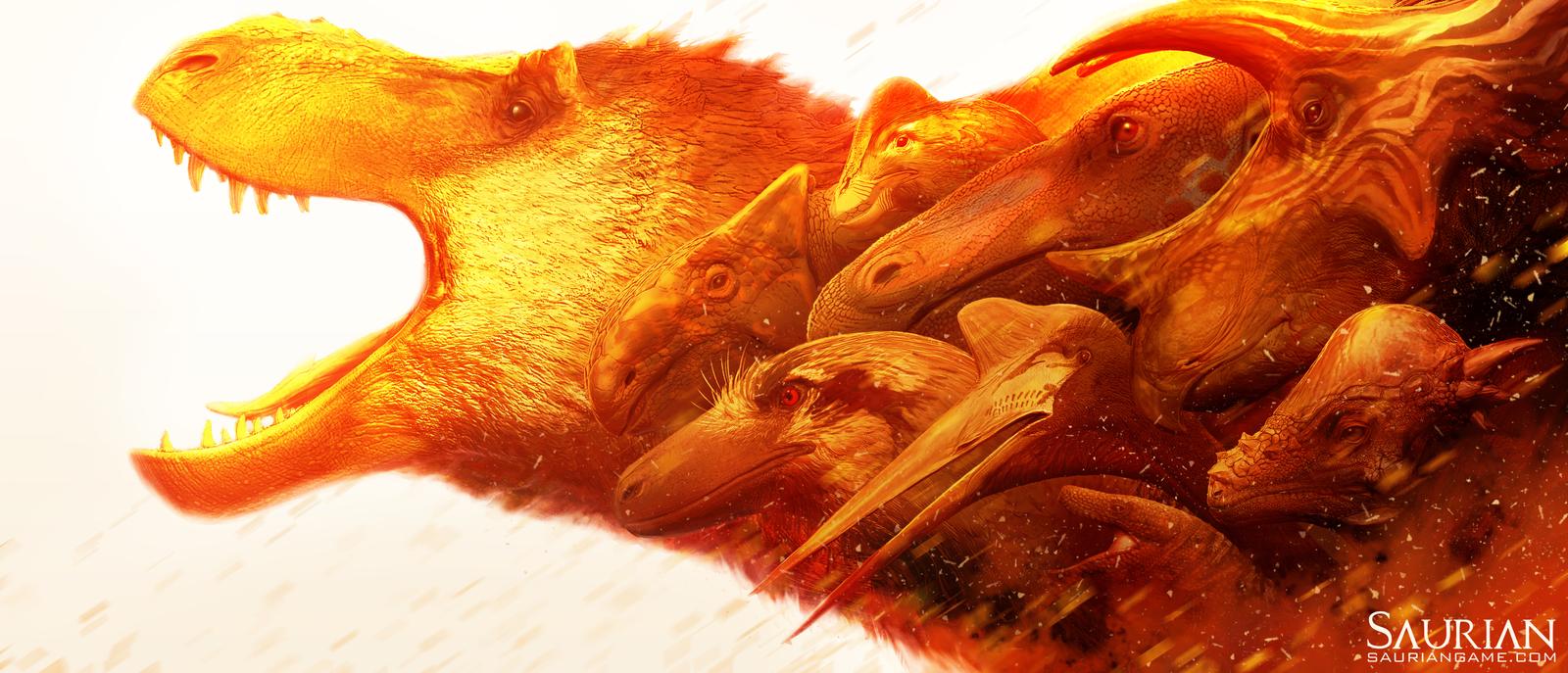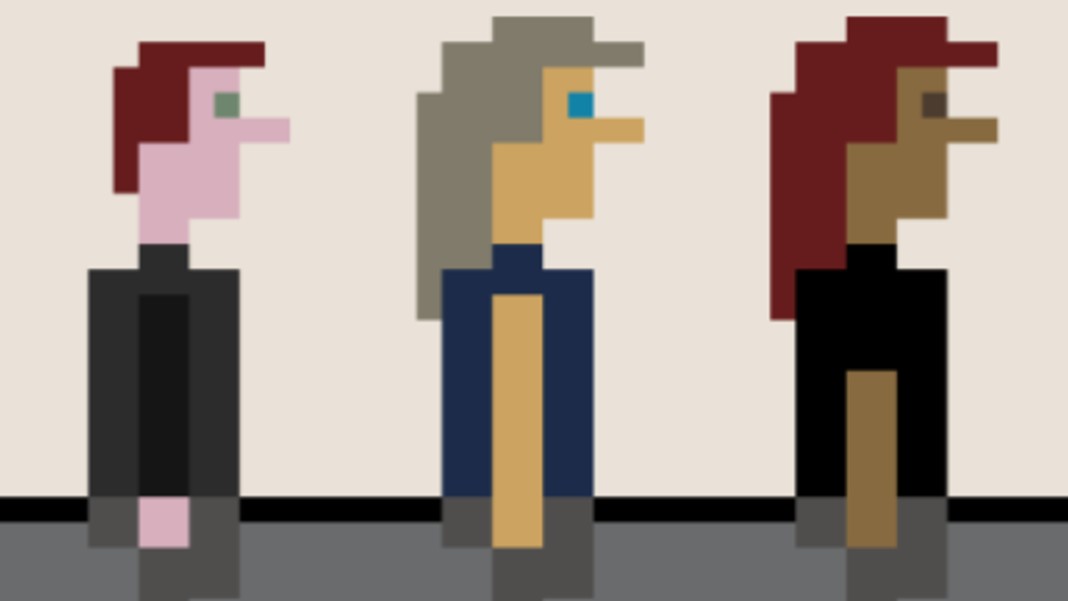It’s awards season for games too, and while the Game Awards took place last December, and the Game Developers Choice Awards and Independent Games Festival awards are scheduled for next month at the Game Developers Conference, the 46th Annie Awards honored games last Saturday at UCLA.
The Annies are dedicated exclusively to animation, and while it’s largely focused on recognizing work in television shows and feature films, video games have been honored too. The Annies held on Feb. 2 gave Nomada Studio’s Gris the award for best character animation in a video game. Polyarc’s Moss was nominated for both the Annies’ inaugural VR category and best character animation in a video game.
Gris Translating Illustration to Animation Pays Off
Published by Devolver Digital, Gris is Barcelona-based Nomada Studio’s first game. The now critically acclaimed platformer is based on freelance illustrator Conrad Roset‘s artwork, and was always meant to translate his style into an interactive medium. Roset even contributed directly to Gris as the game’s creative director.
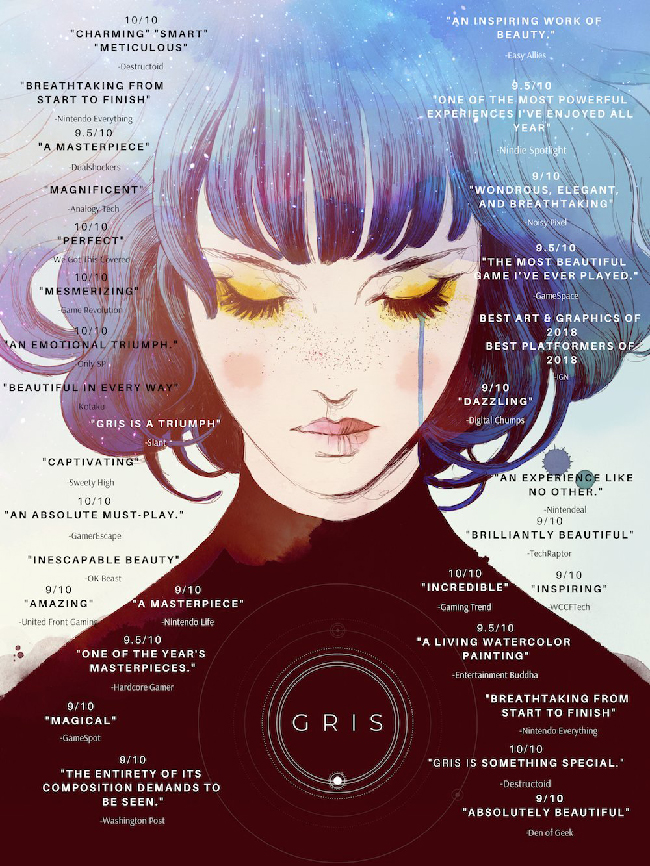
This illustration by Gris creative director Conrad Roset is available for purchase at the Nomada Studio website.
According to the Annies program book (page 26), Adrián Miguel and Adrian Garcia were honored at the ceremony as the main creative force behind animating Gris. While Garcia oversaw the storyboarding and animatics used to create the game’s main cinematics, Miguel worked as the game’s lead animator for over two years, collaborating with Ruben Berkeley, Joel Roset—Conrad Roset’s younger brother—and a number of clean-up artists.
Garcia and Miguel were also both lead animators on the eponymous character Gris during the game’s cinematics. Miguel’s role as lead animator also included work on Gris-the-character during gameplay, and on another character, Sombra.
In an interview with the Verge, Nomada Studio co-founder Roger Mendoza talked about the difficulty of translating Roset’s art into an interactive medium. He discussed simplifying the main character’s design, and making sure players could understand what was visually going on in the game.
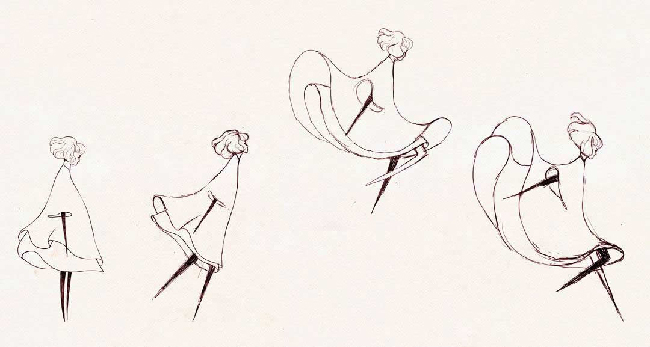
Concept art for Gris.
“It was also a struggle trying to find the balance between art and readability,” Mendoza said. “You always want to make sure every frame is beautiful, but at the same time don’t want to confuse the player.”
Besides Gris, Polyarc’s Moss was the only other indie game nominated for best character animation in a video game at the Annies. The other nominees were all AAA titles—Shadow of the Tomb Raider, God of War, and Marvel’s Spider-Man. Though a debut game from a new studio with a smaller budget, Gris and its more experimental style in both visuals and gameplay won instead of three AAA powerhouses.
It’s just incredible to have won the Annie Award for best Character Animation in Videogame!! Thank you! pic.twitter.com/HzeNWIQHId
— Nomada Studio – NEVA & GRIS (@nomadastudiobcn) February 3, 2019
At the time of writing, Nomada Studio’s Annie for Gris is the first award that the game has won. Nomada Studio’s debut title was previously nominated for the Off Broadway Award for Best Indie Game at the New York Game Awards.
Gris marks the second time an indie game has won an Annie for best character animation in a video game. Last year’s Cuphead was the first indie game to win in that category at the Annies.
The “best character animation in a video game” category is still new at the Annies. It first started at the 42nd Annies in 2014, and before Cuphead and Gris, all the winners were AAA games—Assassin’s Creed Unity, Evolve, and Uncharted 4: A Thief’s End.
Gris getting recognized may show a new winning streak emerging for indie games at the Annies.
Moss as Part of the Inaugural VR Crowd at the Annies
According to Variety, last Saturday was the first time that the Annies honored virtual reality with its own category.
Developer Polyarc’s Moss was the only VR game nominated for best VR Production and outstanding achievement in VR at the Annies. The other nominees were VR films—Mind Palace, Battlescar, Age of Sail, and the winner, Crow: The Legend.

Moss has been nominated multiples times for various awards, including a nomination at the Game Critics Awards for Best VR Game.
Variety reported that the organization ASIFA-Hollywood, which regularly hosts the Annies, held a VR lab where judges could watch VR in its original format. This is a change from the Annies’ previous policy about VR, which once required a 2D version of VR for award eligibility.
Polyarc’s animation director, Richard Lico, told Variety that Moss was both “an interactive narrative production” and a video game.
“One of our primary goals for Moss was to immerse the ‘reader’ in a VR world, building an emotional bond with a virtual character,” Lico said. “Quill, the protagonist of Moss, delivers many unique performances in both diorama and book settings preceding and interspersed within gameplay moments.”
The Annies didn’t only recognize Polyarc’s game for its VR. Moss was also nominated for best character animation in a video game; it was the only other indie game besides Gris to be a nominee for that category (which Gris ultimately won).
The Annies program book listed Lico—who was also the lead animator on Moss—as the honored nominee for his work on Quill in the game.
Gaming at the Annie Awards
If the VR category continues at the Annies, the awards ceremony will have another way to honor video games besides recognizing the best character animation in a video game. Though with Moss as its only game nominee for its first time at the Annies, it’s not a guarantee—but it’s still a possibility.
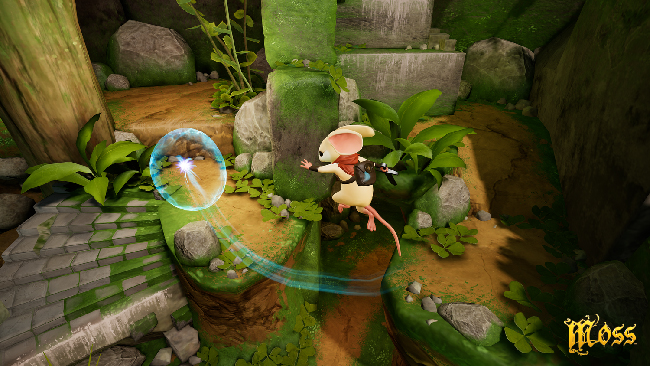
Founders of Moss developer Polyarc previously worked at Bungie.
There used to be an Annie Award for the best video game. It was first awarded in 2005 at the 33rd Annies, and Valiant Hearts: The Great War was the last winner at the 42nd Annies in 2014.
While the 42nd Annies was the last time that the animation awards ceremony chose best game of the year, it was also the first time that an award was given for best character animation in a video game. Given that, it seems like the “best character animation in a video game” category replaced the “best animated video game” category at the Annies.

Gris developer Nomada Studio was founded by Roger Mendoza and Adrián Cuevas, who previously worked on AAA games.
While the Annies feature recognition for different disciplines of animation in television and film like writing, voice acting, and production design that could also apply to games, to be that comprehensive could run into some pitfalls. Video games do have their own awards ceremonies, and the Annies may not want to needlessly expand while encroaching on what could be considered others’ territory.
So it may be for the best that the Annies give some recognition to games as another form of animation, but not as comprehensively as possible.
